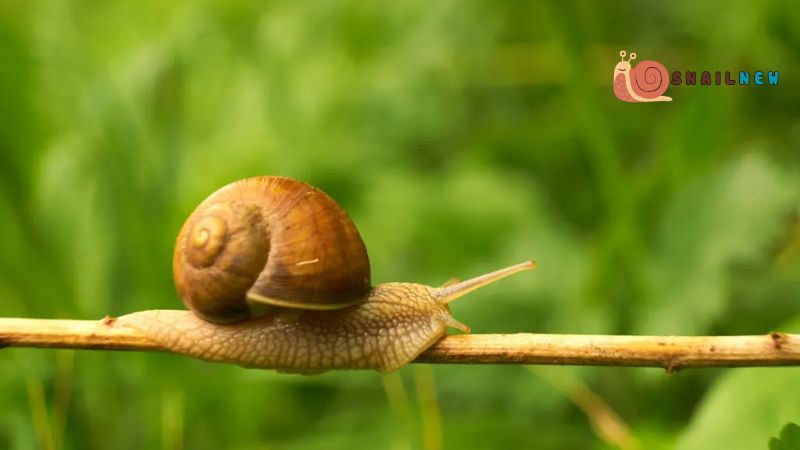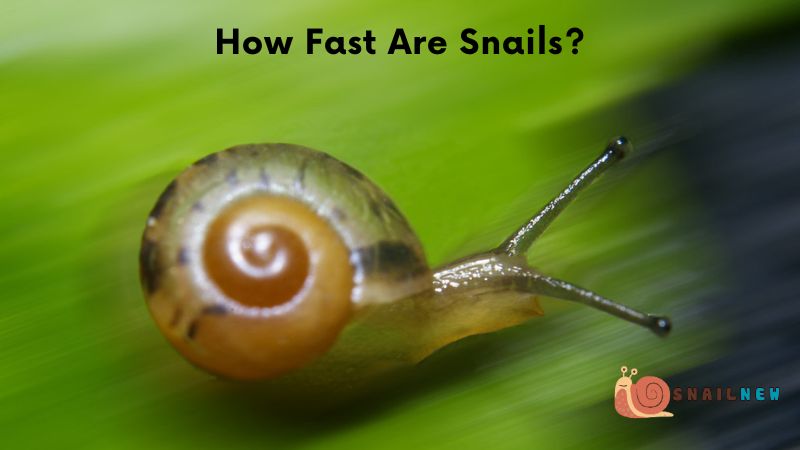In the bustling world we live in, speed often reigns supreme. From high-speed trains to lightning-fast internet connections, we’re accustomed to things moving swiftly. Yet, nestled within the tapestry of nature, there exists a creature that defies the need for speed: the humble snail. In this exploration, Snailnew delve into the world of these slow-moving marvels, answering the timeless question: How fast are snails?
Table of Contents
ToggleThe Sluggish Journey Begins:
Snails, characterized by their soft bodies and distinctive spiral shells, have long been emblematic of leisurely movement. Yet, the question remains: just how slow are they? Imagine observing a garden snail navigating its environment. With its muscular foot elegantly propelling it forward, it moves at a pace that’s noticeably unhurried compared to our own. The garden snail, scientifically known as Helix aspersa, maintains an average speed of approximately 0.013 meters per second, which translates to a sluggish 0.03 miles per hour. This leisurely pace offers a fascinating contrast to the rapid movements we’re accustomed to witnessing in the world around us.

The Tortoise of the Land:
While the snail’s slow pace may prompt jests from some, there’s an undeniable charm to its leisurely journey. In a society fixated on speed, the snail serves as a poignant reminder to embrace a slower pace and savor the journey itself. With its unhurried movement, the snail demonstrates an ability to appreciate the intricacies of its environment, navigating with patience and purpose. In doing so, it invites us to cultivate a similar mindfulness, urging us to pause, observe, and find beauty in the subtleties of our own journeys.
How Fast Are Snails?
Contrary to the stereotype of sluggishness associated with snails, certain species demonstrate unexpected bursts of speed. Consider the Roman snail, a majestic gastropod renowned for its surprising agility. With the ability to reach speeds of up to 0.03 meters per second, nearly double that of its garden-dwelling counterpart, the Roman snail challenges conventional perceptions of snail locomotion. However, even with this increased velocity, it still falls short of the rapid movements characteristic of other creatures, serving as a fascinating example of the diverse capabilities found within the world of gastropods.

The Evolutionary Implications:
So why do snails move at such a leisurely pace? The answer lies in their unique physiology and evolutionary history. Snails, with their soft bodies and delicate shells, have evolved to prioritize protection over speed. Their slow and steady approach allows them to conserve energy while minimizing the risk of injury. In the evolutionary arms race, the snail has opted for resilience over rapidity, a strategy that has served it well for millions of years.
Adaptations for Efficiency:
Despite their sluggish reputation, snails possess remarkable adaptations for efficient movement. Their muscular foot, which serves as both a locomotor organ and a means of support, is finely tuned for navigating diverse terrain. Through rhythmic contractions, the snail propels itself forward with surprising grace, utilizing mucus to reduce friction and enhance traction. It’s a testament to the marvels of evolutionary engineering, showcasing nature’s ingenuity in even the most seemingly mundane creatures.
The Need for Conservation:
In a world where habitats are rapidly disappearing and biodiversity is under threat, the plight of the snail serves as a poignant reminder of our interconnectedness with nature. Many species of snails are facing unprecedented challenges, from habitat destruction to climate change. As stewards of the planet, it’s imperative that we recognize the importance of preserving not only charismatic megafauna but also the seemingly insignificant creatures that play a vital role in ecosystem health.

A Slow Revolution:
In recent years, there has been a growing appreciation for the humble snail and its role in the natural world. Citizen science projects, aimed at monitoring snail populations and habitat health, have empowered individuals to contribute to conservation efforts. Additionally, advances in technology have enabled researchers to study snail behavior and ecology with unprecedented detail, shedding light on the intricacies of their slow-paced lives.
The Poetry of Motion:
In our fast-paced world, it’s easy to overlook the beauty of slow motion. Yet, in the graceful undulations of a snail’s journey, there exists a poetry of motion that transcends speed. Each movement is deliberate, each moment savored, as the snail navigates its world with quiet determination. Perhaps, in embracing the slow, we can find solace amidst the chaos, learning to appreciate the subtle rhythms of life that surround us.
Conclusion:
So, how fast are snails? They’re slow—undeniably slow. But within their leisurely pace lies a world of wonder, a testament to the diverse array of life that inhabits our planet. From the garden snail to the Roman snail, each species embodies its own unique adaptation to the challenges of existence. As we marvel at their slow-motion journey, let us also reflect on the broader implications of their conservation. For in the humble snail, we find a reminder of our shared responsibility to protect and preserve the delicate balance of life on Earth.
Related Posts:
- Exploring the Diverse Types of Garden Snails: A…
- 10 Fun Facts About Snails: Exploring the Enigmatic…
- The Slow but Steady Journey: How Far Can a Snail…
- Exploring the Lifespan of Snails: How Long Do Snails Live?
- Exploring the Diverse Types of Sea Snails: A…
- Do Snails Shed Their Shells? The Truth About Snail Shells


